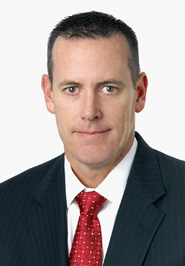Look out, Credit Suisse. Barclays is closing in on U.S. dark pool supremacy.
Simply put, Barclays’ LX dark pool is now the second largest in the United States, behind only Credit Suisse’s longtime leader, Crossfinder.
Amid a multiyear retooling effort and upgrading of its technologies and more aggressive selling, Barclays’ Capital LX dark pool has gained market share that’s propelled it to second place among its peers, according to reports from both Tabb Group and Rosenblatt Securities.
It stood at 23 million shares per day in 2011. Then a new set of Barclays executives stepped in with a plan to grow the venue, and average daily volume now stands at 91 million.
In January, 91 million shares, or 10 percent of all volume on dark pools, were traded each day on LX, according to the Tabb Group Liquidity Matrix, a monthly liquidity and pricing report for U.S. equities exchanges, electronic communications networks, dark liquidity pools and crossing networks. This was second only to Crossfinder, which traded 121 million shares or 18 percent of dark volume.
In reaching 91 million shares, LX slipped past Goldman Sachs’ Sigma X, which stood at 90 million. In the past two years, as LX was rising, the average daily volumes of both Goldman and Credit Suisse were falling. Overall equity market volume during this period was falling. In 2011, it was 8 billion shares per day and today stands around 6.4 billion shares per day.

Rosenblatt Securities, another tracker of U.S. dark pools, reported in its February analysis that LX grabbed 1.41 percent of total consolidated volume of 6.4 billion shares traded daily on all lit or dark venues. That, too, trailed only Crossfinder, which snared 1.88 percent.
“We laid out a plan two years ago to overhaul our offering end to end, gain market share and provide clients with the best electronic trading tools in the market,” said Bill White, head of equities electronic trading at Barclays. “The number-two ranking is a reflection of the success of that plan and the strength of our entire equities franchise.”
Overhaul
How did they do it? White, along with Bill Bell, who joined in 2011, set about a complete overhaul of the firm’s algorithms, built a smart order router and made modifications to the LX dark pool itself. First, White sat down with his engineers and rewrote all the firm’s algorithms. Second, White and his team built from scratch a dynamic smart order router for clients. Lastly, Bell and White set out to promote the new products to all their existing clients and new ones as well-both in the U.S. and globally.
And now, Bell said, the results are paying dividends as the desk has seen both its high- and low-touch volume increase, as has the amount of trading flowing through LX. Bell pointed to better order-routing practices and increased awareness of the firm’s product offerings via client meetings as keys to its success.
“All executions, whether they are high-touch or low-touch, go through LX,” Bell said.
Bell added that the firm’s strategy for juicing its dark pool volumes also included hitting the pavement and visiting not just the institutional investors, but also its broker-dealer business, and meeting with smaller and regional firms who don’t have an electronic trading offering. The firm declined to specify how many new clients it has picked up.
Also within the last year, the broker now watches just who participates in the LX pool via its Liquidity Profiling surveillance. White explained that by incorporating new surveillance technology the firm can monitor trading behavior-including toxicity-of those in the pool and remove traders who do not benefit the firm’s clients. The surveillance technology monitors the pool and executions on a real-time basis now, as opposed to an extended period of one or two days after trade settlement. This has helped promote trade execution in LX, White added, as clients know Barclays is actively looking out for their best interests and quality of execution.
“Clients know we have controls within the pool to stop certain traders from taking advantage of our liquidity,” he said.
White said that the firm also rewrote all the logic in its existing algorithms and redesigned its smart order router. In essence, the firm created new algorithms for clients and a dynamic order router that constantly examines market conditions in real time and adjusts its order-handling strategy immediately.
In 2009, the LX dark pool was languishing in 10th place among its peers. By 2010, it had jumped three spots to number seven; and then in 2011, it climbed yet again, to fifth place. By January 2012, LX had once again moved upward, joining the ranks of Knight Capital Group’s Knight Link and Deutsche Bank’s Super X. But the upward trajectory continued throughout the year, as LX climbed over Knight and Deutsche Bank by December.
With momentum on its side, LX moved past Goldman Sachs Sigma X this year to rest at number two firmly behind Crossfinder. Sigma X traded 90.3 million shares in Rosenblatt’s latest report. And getting into and unseating Goldman in that uppermost of echelons is something that hasn’t been done since 2007, noted Cheyenne Morgan, an analyst at Tabb Group.
Goldman Sachs declined to comment.
Morgan pointed to Barclays’ revamping of its electronic products, such as algorithms and its smart order router, as well as its active promotion of technology, as the keys to success.
“Barclays LX saw a 14 percent increase in volume in January versus December, which is a good way to start the year,” Morgan said. “Passing Sigma X is extraordinary. Barclays took a step back and revamped their products and strategies. They knew they had to hone in on their electronic strengths and get the word out.”
And that Barclays did, she added.
“That’s a good way to start the year and shows Barclays is serious about becoming a contender to the top bulge bracket brokers,” Morgan said.
(c) 2013 Traders Magazine and SourceMedia, Inc. All Rights Reserved.
http://www.tradersmagazine.com http://www.sourcemedia.com/



